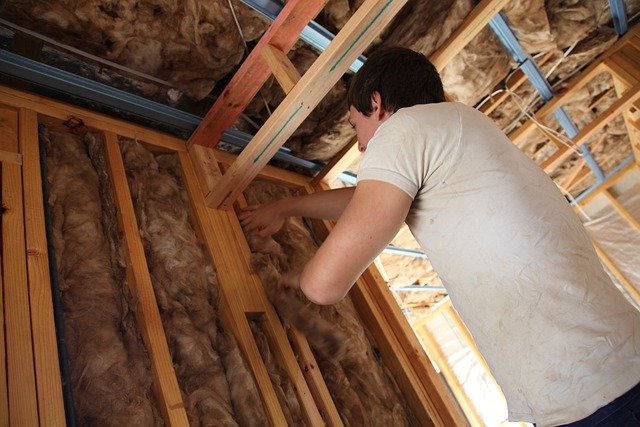
There are two main reasons to make your home more energy-efficient – to save money and to save the environment. Fortunately, by pursuing one goal, you’ll almost always reach the other – even if you didn’t intend to.
The conversation surrounding energy-efficient homes usually revolves around appliances and renewables – both admirable ways to decrease your energy consumption. One of the most effective ways to save energy, however, isn’t talked about nearly enough: insulation.
How Insulation Saves Energy
To understand how and why insulating saves you energy, we first have to understand what it does. The short and sweet answer is that insulation reduces heat transfer. That means that in the summer, it stops hot air from getting into your home, while in the winter, it stops hot air from leaving your home.
The Biggest Cost in Your Home
Heating and cooling are, almost universally, the biggest energy-related costs to running a home – in fact, space heating and cooling combined account for over 50% of energy costs in the average U.S. home.
What this means is that reducing the amount you need to heat and cool your home by half, eliminates, on average, 25% of your energy costs. Eliminating the need for heating and cooling altogether would cut your energy costs in half.
You can already imagine what cutting your utility bill by 25% or more would look like – there are a lot of savings to be had. The cost of insulation, then, is rarely more than the amount of money you’ll get back – not to mention how much you’ll reduce your carbon footprint.
How Insulation Works
Insulation works by reducing heat transfer – that means that it reduces the amount of air that can circulate from the exterior environment into the interior environment.
All insulation focuses on the building envelope – the walls, windows, doors, roof/attic, and foundation of your home. This means there are a ton of avenues through which you can improve your home’s insulation.
It also means there’s lots of room for errors and weak points in a building’s envelope. Homebuyers should get the HVAC inspected to ensure it’s properly insulated, and not creating zones where thermal transfer is possible. In the same vein, they should check the entire building envelope for weak spots.
A home’s insulation is basically only as strong as its weakest point – heat transfer can and will happen in any area that isn’t sufficiently insulated, and this transfer seriously impedes the efficiency of the rest of the insulation.

How Much Energy Could you Save?
As you can imagine, this question doesn’t have a straightforward answer – it depends on a wide variety of factors. We’ve seen that the average American household could reduce their energy consumption by 50% if insulation eliminates the need for heating and cooling – that’s not always possible, however. Nonetheless, almost anyone can save a substantial amount of energy through insulation. Let’s look at some of the factors:
How insulated is your house?
This is a big one: if your house is already very well-insulated, you’ll probably find additional insulation only results in marginal savings. A house built at the turn of the 20th century that has never been reinsulated, on the other hand? You’re going to find your utility bills plummet when you insulate.
Keep in mind, insulation comes in many forms, from weatherstripping doors and windows to replacing fiberglass batts with rigid foam insulation. The question, then, isn’t only how insulated your home is now, but how much better insulated it will be after your project is complete.
The Climate in your Area
People living in Portland may find it possible to eliminate their need for heating and cooling altogether with sufficient insulation. Those living in Anchorage or Fargo, on the other hand, are going to find it all but impossible to eliminate the need for heating.
The flipside to this equation is that people living in extremely cold climates have that much more to gain from insulating. They’re already spending significantly more on heating than most households, so reducing energy consumption by 25% might mean a greater reduction in energy usage than a home in warmer climes reducing their consumption by 50%.
Passive House
One energy standard that’s absolutely worth looking at is Passive House. The idea is that by insulating your house sufficiently, you can eliminate the need for heating and cooling altogether, or you can replace traditional HVAC systems with a heat pump.
Passive House homes are so well-insulated that you need a ventilator to prevent air from becoming stale – with modern energy recovery ventilators, you can do this with minimal heating and cooling loss. Coupled with the use of renewable energies, Passive House designs can be carbon neutral – or better yet, carbon negative.
With that, we’ve answered the question we set out to answer: insulation alone can save you significant amounts of energy; in some cases, it could reduce your consumption by 50% or more. Coupled with renewable energy and high-efficiency appliances, insulation can help, not to only eliminate your energy consumption, but make you carbon negative – effectively reducing your neighbor’s energy consumption as well.
P.S: – If you’d like to learn online and also make some money doing it, you might consider joining our EAT FREE Community! You’ll find hundreds of videos and resources to help you make some money, making the planet better!
Related Articles and Resources:
- How To Make Your Home More Energy Efficient
- 5 Ways to Cut Down Your Winter Energy Bills
- Why you Should Consider a Home Passive Solar Design





